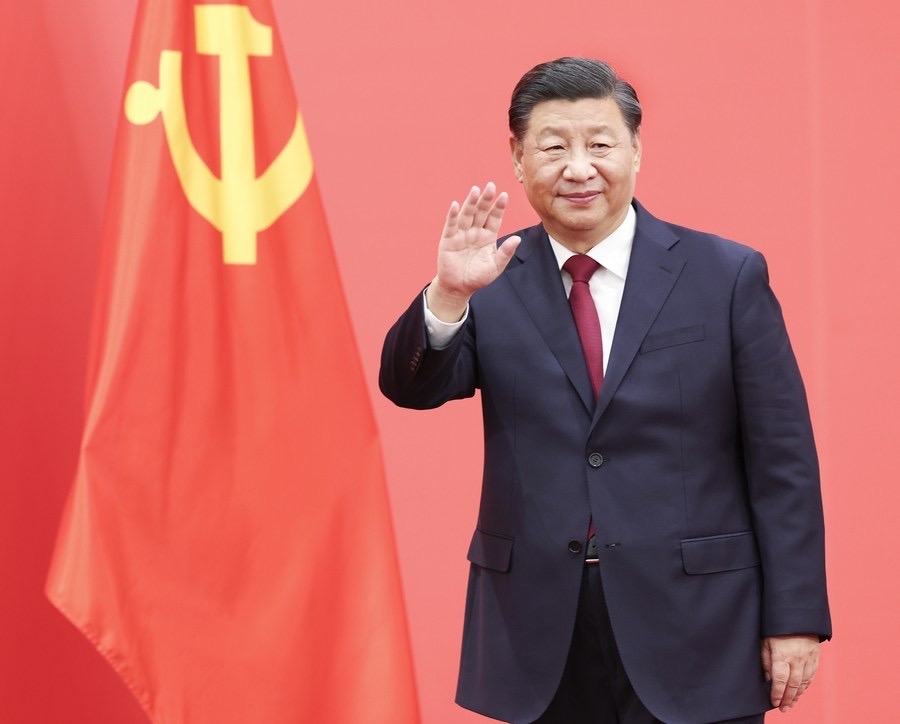
China’s economy expanded by 5.3% year-on-year in the first half of 2025, showing signs of steady recovery driven by high-tech manufacturing, digital consumption, and robust industrial output, even as challenges persist in the property sector and private investment.
According to data released on 15 July 2025 by the National Bureau of Statistics (NBS), the country’s gross domestic product (GDP) reached 66.05 trillion yuan (approximately USD 9.1 trillion) in the January–June period.
The economy posted 5.4% growth in the first quarter, followed by 5.2% in the second, maintaining a pace slightly above the government’s annual growth target of around 5%.
One of the standout performers was high-tech manufacturing, which grew by 9.5% year-on-year, significantly outpacing the overall industrial output growth of 6.4%. The NBS highlighted strong gains in industries such as electrical machinery, automotive technology (particularly new energy vehicles), semiconductors, and aerospace equipment.
This industrial rebound is partly driven by global demand for advanced Chinese products, as well as government policies promoting technological self-reliance in the face of ongoing U.S.-China trade tensions and restrictions on chip and defense technology transfers.
Exports, a traditional growth engine, remained resilient despite global economic uncertainties. Shipments of electric vehicles, solar panels, and lithium batteries rose sharply, helping to offset declines in other categories.
Consumption Rebounds, Fueled by Online Sales
Retail sales of consumer goods increased 5.0% year-on-year in the first half, while online retail sales jumped 8.5%, reaching 7.43 trillion yuan. Notably, sales of services like tourism, catering, and entertainment also rebounded due to relaxed COVID-era restrictions and rising household income.
The per capita disposable income of Chinese residents grew by 5.3% in nominal terms, and 6.3% in real terms, indicating that rising wages and stable employment are supporting household purchasing power.
Despite overall growth, the property market continues to be a drag on the broader economy. Investment in real estate development dropped 11.2% year-on-year, and sales of commercial buildings, in terms of floor area sold, declined 5.5%.
The government has taken several steps to stabilize the housing sector, including easing mortgage rules, supporting affordable housing projects, and encouraging local governments to purchase unsold inventory. Still, confidence among developers and homebuyers remains fragile.
At the same time, private fixed-asset investment, a key barometer of business sentiment, fell 0.6% in the first half, in contrast to an 8.1% rise in state-led investment. The imbalance has raised concerns about the health of the private sector, especially small and medium enterprises (SMEs), which have been slower to recover from the disruptions of the past few years.
Employment and Inflation Stay in Check
The urban unemployment rate stood at 5.0% in June, with youth unemployment remaining elevated despite recent government initiatives to expand vocational training and hiring subsidies. Still, overall job market conditions were described by NBS as generally stable.
On the inflation front, consumer prices fell 0.1% in the first half of 2025, as food prices remained subdued and weak domestic demand kept broader price pressures in check. This has prompted concerns about deflationary risks, although core inflation remains positive.
The Producer Price Index (PPI), a measure of factory-gate prices, also continued its downward trend, reflecting weak pricing power in manufacturing despite output growth.
Monetary policy is expected to remain prudent and flexible, while fiscal tools including infrastructure spending and tax incentives are likely to be further deployed to stabilize growth.
As the world’s second-largest economy navigates a complex transition from investment-led growth to a more consumption and innovation-driven model, the first-half data suggest that China’s recovery is on track though uneven across sectors.
The government’s ability to manage weak spots like real estate, maintain employment stability, and further stimulate domestic demand will be critical for sustaining momentum in the latter half of 2025.
Shahriena Shukri is a journalist covering business and economic news in Malaysia, providing insights on market trends, corporate developments, and financial policies. More about Shahriena Shukri.




